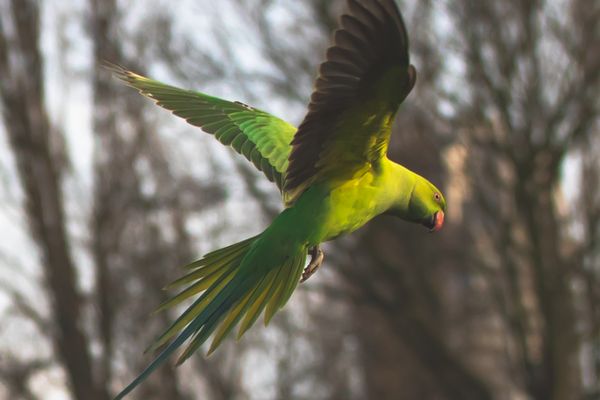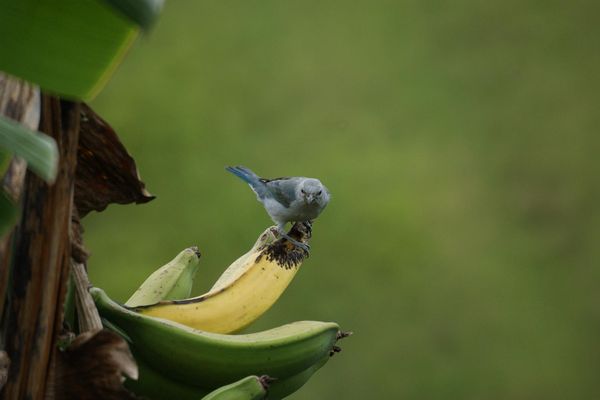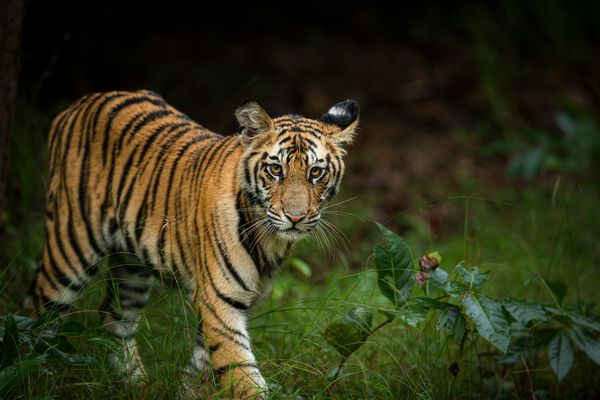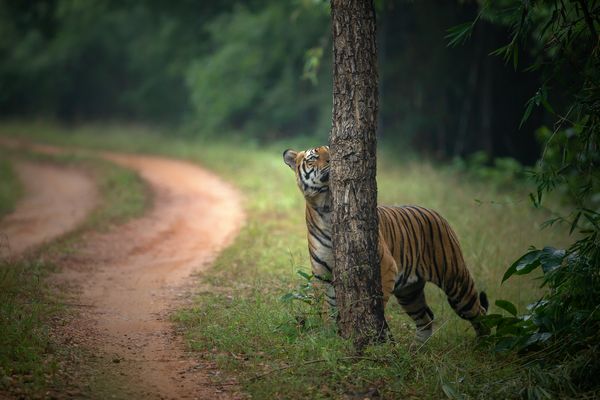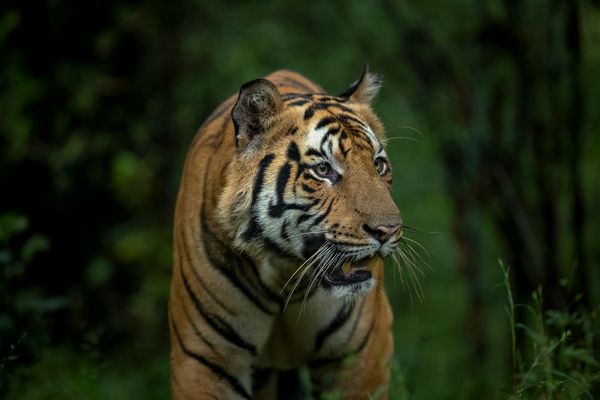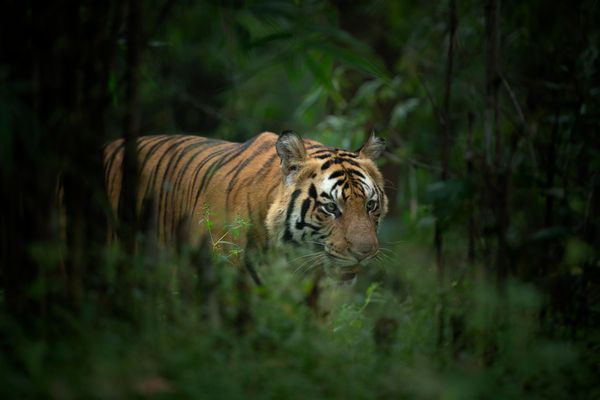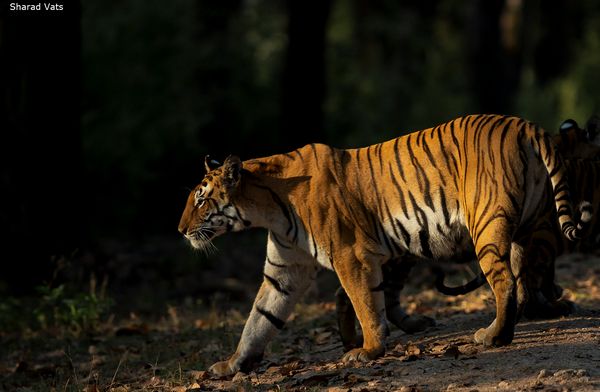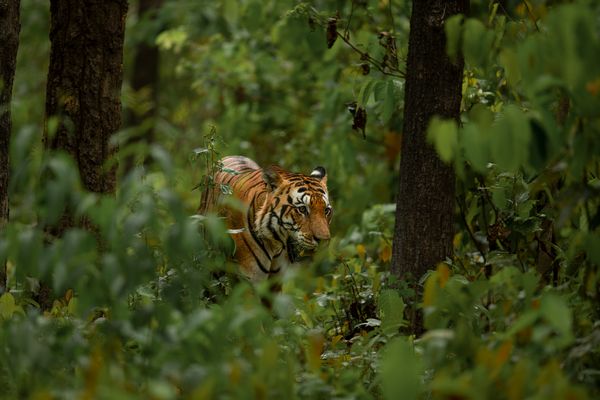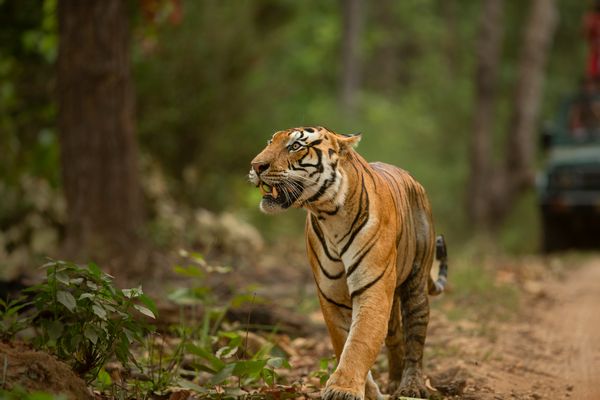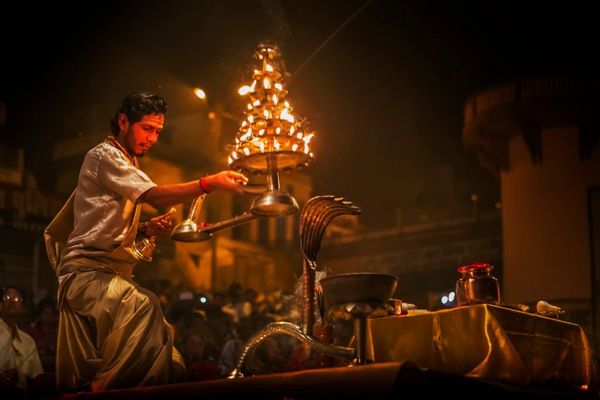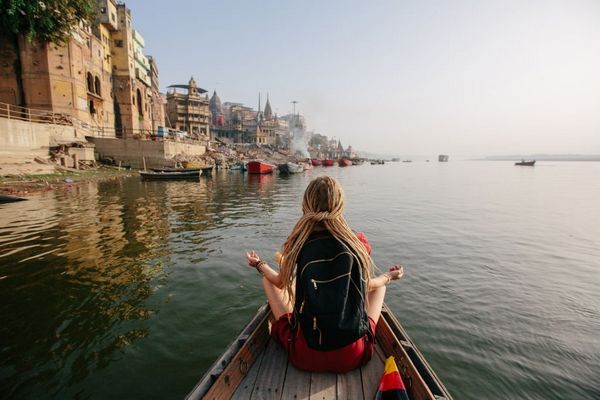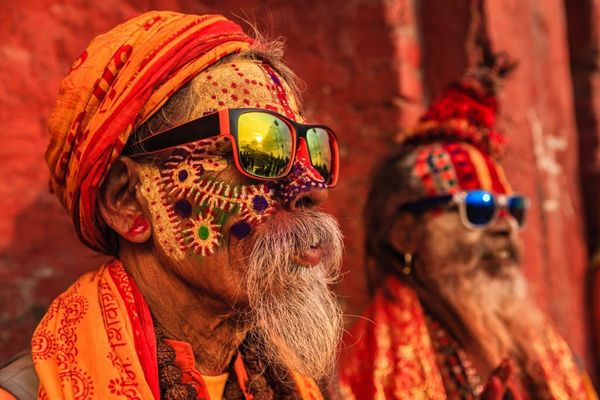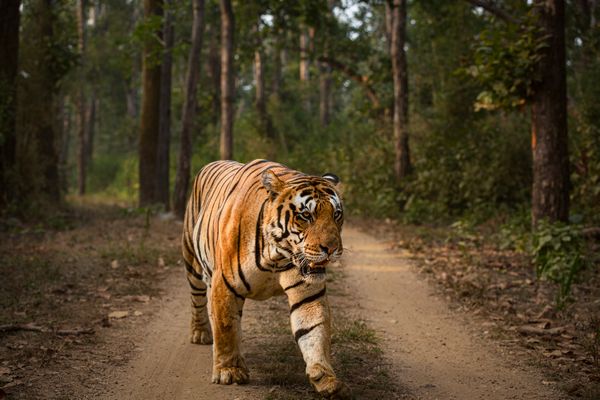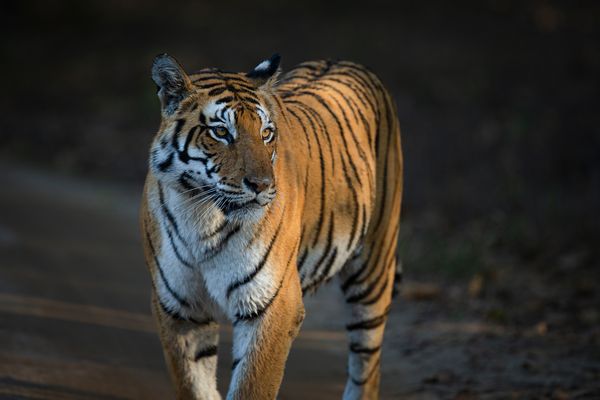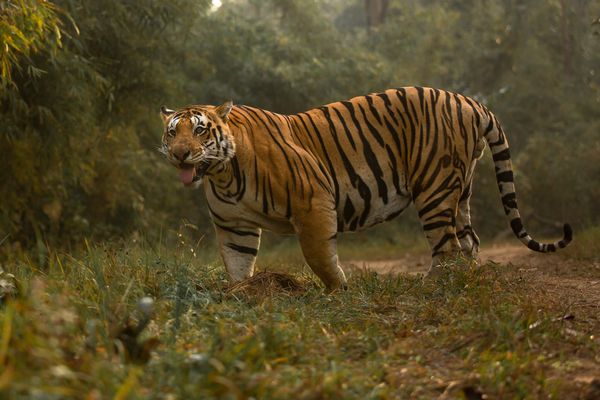India – A Photographer’s Paradise Safari Tour
20 nights / 21 days
Destination Covered
- Day 1 : Arrive New Delhi (by flight)
- Day 2 : New Delhi – Agra (by surface – 220 Kms, 4-hour drive)
- Day 3 : Agra – Bharatpur (by surface 55 Kms, 2-hour drive)
- Day 4 : In Bharatpur Bird Sanctuary
- Day 5 : Bharatpur Bird Sanctuary (day visit to Dholpur)
- Day 6 : Bharatpur – Ranthambhore (by surface 210 kms, 4-hour drive)
- Day 7 - 8 : In Ranthambhore
- Day 9 : Ranthambhore – Jaipur (180kms, 3-hour drive)
- Day 10 : Jaipur
- Day 11 : Jaipur – New Delhi (275km, 5-hour drive)
- Day 12 : New Delhi – Raipur – Kanha (flight + 200 kms/4 hrs drive)
- Day 13 - 14 : In Kanha National Park
- Day 15 : Kanha – Bandhavgarh (by surface 280 kms/6 hrs drive)
- Day 16 - 18: In Bandhavgarh National Park
- Day 19 : Varanasi
- Day 20 : Varanasi – New Delhi (275 kms/5 hrs drive)
- Day 21 : New Delhi – Fly back
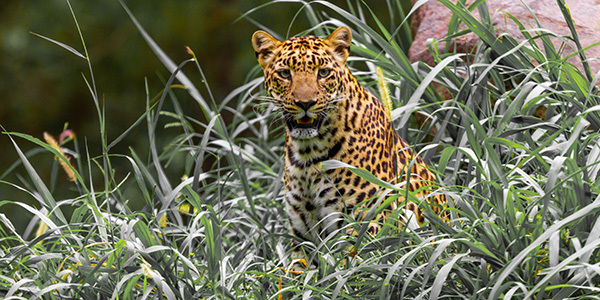
Detailed Itinerary : India – A Photographer’s Paradise Safari Tour
Day 1 : Arrive New Delhi (by flight)
On arrival at the New Delhi airport, you will be met by our representative. He will transfer you to your hotel and assist you in check-in at the hotel. He will also handover and explain all the travel-related documents. Overnight stay is at the hotel.
Day 2 : New Delhi – Agra (by surface – 220 Kms, 4-hour drive)
After relaxed breakfast drive to Agra, 220kms, 4-hour drive. On arrival check into the hotel. Evening visit Mehtab Bagh to see Taj Mahal at Sunset. Mehtab Bagh is a charbagh complex in Agra, North India. It lies north of the Taj Mahal complex and the Agra Fort on the opposite side of the Yamuna River, in the flood plains. The garden complex, square in shape, measures about 300 by 300 metres and is perfectly aligned with the Taj Mahal on the opposite bank.
Overnight stay at the hotel in Agra.
Day 3 : Agra – Bharatpur (by surface 55 Kms, 2-hour drive)
Sunrise proceed to visit the famous white marble mausoleum, The Taj Mahal, which was built in the middle of the 17th century by the Moghul emperor Shah Jehan for his wife Mumtaz Mahal.
Completed in 1652, skilled craftsmen from Persia, Turkey, France and Italy and some 20,000 labourers worked for 17 years to build this edifice.
After relaxed breakfast, check out from the hotel. Proceed to visit the red sandstone AGRA FORT which stands like a crescent on the banks of Yamuna River enclosed by forbidding 20-meter high walls, with a 12- meter moat between them. Three successive Mughal emperors – Akbar, Jehangir and Shah Jehan – helped create this massive structure which contains Hindu and Muslim architecture. [The Taj is closed on Friday].
Later drive to Bharatpur, 55kms, 1-1.5-hour drive. On arrival check into lodge. After lunch proceed for evening bird watching at Bharatpur Bird Sanctuary.
These diverse habitats are home to 366 bird species, 379 floral species, 50 species of fish, 13 species of snakes, 5 species of lizards, 7 amphibian species, 7 turtle species, and a variety of other invertebrates. Every year thousands of migratory waterfowl visit the park for wintering and breeding. The sanctuary is one of the richest bird areas in the world and is known for nesting of resident birds and visiting migratory birds including water birds. Overnight in Bharatpur.
Day 4 : In Bharatpur Bird Sanctuary
Morning go for birding to the sanctuary, for every birdwatcher’s paradise. Bharatpur bird sanctuary also known as Keoladeo National Park.
It was declared a protected sanctuary in 1971. It is also a declared World Heritage Site. After lunch in afternoon go on a quest in rickshaw for search of some exclusive species of birds not only residents but also some migratory ones. Dinner and overnight at the lodge in Bharatpur.
Day 5 : Bharatpur Bird Sanctuary (day visit to Dholpur)
After breakfast leave for day visit to Chambal 120 Kms, 3 hrs. drive. Go for birding on Chambal river. National Chambal Sanctuary which is a 400 km protected stretch of the river. A boat safari takes you on a two-three hour ride down the River Chambal, drifting past gharials basking on the sandbanks, marsh crocodiles and turtles sunning themselves on the rocks and a wealth of birds fluttering around. Also visit Sarus Crane Wetland area.
Return back to Bharatpur for overnight stay.
Day 6 : Bharatpur – Ranthambhore (by surface 210 kms, 4-hour drive)
Morning bird watching at Bharatpur Bird Sanctuary and later drive to Ranthambhore 210 kms, 4-hour drive. On arrival check into Lodge.
Evening free for leisure. Dinner and overnight stay at the lodge.
Day 7 : In Ranthambhore
Morning & evening jeep safaris in the park. Meals at the lodge. Overnight at the lodge in Ranthambhore.
Ranthambhore with an area of 400 sq. km encompassing rocky hill crests which descend to open valleys between the Aravalli and Vindhya ranges, dotted with water pools and fruit trees, this park gets its name from the thousand-year-old fortress, which looms above the forest. Well known for the diurnal activity of tigers, Ranthambhore is a very special and unusual area where a natural present meets a historical past. Sambar, cheetal, chinkara, nilgai and languor. The elusive leopard and tigers are found in this reserve with tourists standing a very good chance of seeing tigers during the safaris.
Day 8 : In Ranthambhore
Morning & afternoon jeep safaris in the park. Breakfast, lunch and dinner at the lodge. Overnight at the lodge in Ranthambhore.
This is one park which will give you all the angles, lighting, backdrop, and many frames of different kinds. Ranthambhore is also rich in birdlife with around 300 species of birds. In fact for a keen bird watcher, Ranthambhore and the surrounding area is a paradise. Some interesting resident species of birds are large Cormorant, Painted Spurfowl, Sarus Crane, Bronzed winged Jacana, Sandpiper, Kingfisher, Nightjar, Painted Sandgrouse, Great horned owl and many more regular winter migrants which come from their nesting ground north of Himalayas to Ranthambhore and surrounding areas.
Day 9 : Ranthambhore – Jaipur (180kms, 3-hour drive)
After morning jeep safari in Ranthambore NP, return to the hotel for breakfast and then check out. After lunch drive to Jaipur 180 Kms, 3-hour drive. On arrival check into hotel.
Overnight at Jaipur hotel.
Day 10 : Jaipur
This morning you will drive 11 km to the outskirts of the city to visit Amber Fort, the ancient capital of the State until 1728.
Visit the Temple of Kali, the Hall of Victory or Jai Mahal and Jagmandir. In the afternoon visit the Observatory, the Palace of Winds and the City Palace and Museum. The museum has an interesting textile section, which contains dresses and costumes of the former Maharajas and Maharanis of Jaipur. Jaipur is well known for its beautiful carpets, enamelled ornaments, precious and semi-precious stones, brass ornaments and many other arts and crafts. Spend time in crowded lanes & by lanes of pink city, haggling and souvenir-hunting in the evening. Overnight stay at hotel in Jaipur.
Day 11 : Jaipur – New Delhi (275km, 5-hour drive)
After breakfast check out from hotel and drive to New Delhi 275kms / 5hrs drive. On arrival check into the hotel. Overnight stay at the hotel.
Day 12 : New Delhi – Raipur – Kanha (flight + 200 kms/4 hrs drive)
Board a flight at 0650 hrs to arrive Raipur at 0840hrs. Met at the airport and drive to Kanha National Park 220 km / 4-hour drive. On arrival check into the Resort. After lunch go for an afternoon jeep safari to the national park. Dinner and overnight stay at the resort.
Day 13 : In Kanha National Park
Wake up at 0500hrs, tea coffee with biscuits, and proceed for the morning safari to the National park.
Kanha’s sal and bamboo forests, rolling grasslands and meandering streams stretch over 940 sq km in dramatic natural splendor which form the core of the Kanha Tiger Reserve created in 1974 under Project Tiger. The park is the only habitat of the rare hardground Barasingha (Cervus Duvaceli Branderi).
This is the original Kipling country of which he wrote so vividly in his Jungle Book. Packed breakfast which comes from the Lodge is served at a designated spot and spread on the bonnet of the Safari vehicle. Enjoy your breakfast in the wilderness of Kanha.
Continue your search for the elusive Tiger if you have not yet seen the same, and soak in the fresh, and energizing environment. Return from Safari around 1130hrs. Freshen up, and Lunch is served.
The national park is closed for afternoon safari today, so we will arrange a nature trail for you in buffer forest. This is a 7kms walk in the forest along a river. Good for birding and mammal watching as well. You may choose to do a short walk as well if you so desire. Return at 5pm from the walk. If you are not keen, we can visit a nearby tribal village to see their lifestyle. Dinner and overnight at the Lodge.
Day 14 : In Kanha National Park
Wake up, and get ready for another day of adventure in the National park. The forests of the Banjar valley and Halon valley, respectively forming Kanha’s western and eastern halves. By a special statute in 1955, Kanha National Park came into being. Since then, a string of stringent conservation programmes have been launched, for the overall protection of the park’s fauna and flora. Kanha boasts of about 38 species of mammals. Some of the inhabitants of this park are the gaur, the largest of the world’s cattle; the sambar, the largest Indian deer; and the chausingha, the only four-horned antelope in the world. Other frequent visitors include the Nilgai antelope, the sloth bear, the dhole, or Indian wild dog, and an occasional Leopard. Some 300 species of birds inhabit the park, that includes the storks, egrets, black ibis, raptors, owls, and the red-wattled lapwings.
Depart for afternoon jeep safari Kanha National Park. Return at 6pm from safari. Dinner and overnight at the Lodge.
Day 15 : Kanha – Bandhavgarh (by surface 280 kms/6 hrs drive)
After depart for Bandhavgarh, 280kms, 6-hour drive. On arrival check into the Lodge. After lunch proceed for afternoon jeep safari to the national park. Dinner and overnight at the Lodge.
Day 16 : In Bandhavgarh National Park
Breakfast, Lunch and Dinner at the Resort. Morning and afternoon Jeep safari to the national park.
Bandhavgarh:
The national park is mainly known for the density of its tiger population. The other wild attractions in the park include Leopards, Blue Bulls, Indian Gaur (Bison) Chausingha (Four Horned Antelopes), Spotted Deers, Sambar Deer, Wild Boar, Sloth Bears Fox, Jackals, Wild Dogs, etc. There are at least 22 mammal species and about 250 bird species in the Park. The other animals found in Bandhavgarh are Ratel, Porcupine, Small Indian Civet, Palm Squirrel, Lesser Bandicoot rat, the Jungle Cat, and the shy Hyenas. The reptile population in the park includes Cobras, Kraits, Vipers, Ratsnakes, Pythons, Monitor Lizards and turtles. The two-primate species – the rhesus macaque and the Hanuman langur – inhabit Bandhavgarh. Overnight at the Resort.
Day 17 : In Bandhavgarh National Park
Breakfast, Lunch and Dinner at the lodge. Morning and afternoon jeep safari to the national park.
Bandhavgarh has been a center of human activity and settlement for over 2000 years, and there are references to it in the ancient books, the Narad-Panch Ratra and the Shiva Purana. The oldest sign of habitation in the park are caves dug into the sandstone to the north of the fort. Several contain Brahmi inscriptions dating from the 1st century B.C. Various dynasties have ruled the fort, for example, the Maghas from the 1st century A.D., the Vakatakas from the 3rd century A.D., From that time onwards Bandhavgarh was ruled by a succession of dynasties including the Chandela Kings Bandhavgarh became more and more deserted until forest overran the area band it became the royal hunting reserve. This helped to preserve the forest and its wildlife, although the Maharajas made full use of their rights. At independence Bandhavgarh remained the private property of the Maharaja until he gave it to the state for the formation of the National Park in 1968. After the park was created poaching and hunting was brought under control and the number of animals rose dramatically. The Tigers in particular prospered and the 1986 extension provided much needed forest to accommodate them. Overnight at the lodge.
Day 18 : Bandhavgarh- Khajuraho (by road 280 kms/6-hrs drive)
After breakfast drive to Khajuraho airport 280 kms/6-hrs drive. On arrival transfer to the airport to board the flight for Varanasi. Leave Khajuraho for Varanasi by UK 622 (1420 / 1525 hrs) Meeting and assistance on arrival at Varanasi airport and transfer to the hotel.
Varanasi is one of India’s most important pilgrimage sites and the holiest of holy cities for Hindus. Known also as Kashi and Benaras, Varanasi is one of the world’s oldest living cities and has been a center of learning and culture for well over 2000 years.
Evening: Visit the “Ghats” or bank of the Ganga River. This is a fascinating walk as you can experience the cultural ethos that guides the life of the pious. See the rituals that take place to the setting sun and the ablutions that are performed in the river. As boats float down-stream, some carrying goods, fruits and vegetables, you will see others carrying the pious who perform ceremonies along the river.
On the banks or “ghats”, you can see some absorbed in prayer and the chanting of hymns, and others engaged in commerce and yet others performing functions like hair-cutting, massaging and even cleaning ears! Walk across to the Manikarnika Ghat, where you can see cremation, performed with intense ritual – the process of sending the departed soul to the heavens. Hindus believe that the gateway to the Heavens and for the Re-incarnation of the Soul `in a better state’, is possible when life’s last journey is from Varanasi. Overnight in Varanasi.
Day 19 : Varanasi
Early morning take a boat ride at dawn down India’s most sacred river, The Ganges. Sun rise at the holy river is a truly tranquil and breath taking sight with pilgrims standing waist-deep in water, praying to the rising Sun. See the famous Vishwanath temple with its spires covered with gold, dedicated to Shiva, the presiding deity of the city. Return to the hotel for Breakfast.
Also visit Sarnath a city located 13 kilometers north-east of Varanasi near the confluence of the Ganges and the Gomati rivers in Uttar Pradesh, India. The deer park in Sarnath is where Gautama Buddha first taught the Dharma, and where the Buddhist Sangha came into existence through the enlightenment of Kondanna. Singhpur, a village approximately one km away from the site, was the birthplace of Shreyansanath, the eleventh Tirthankara of Jainism, and a temple dedicated to him. Overnight at Varanasi.
Day 20 : Varanasi – New Delhi (275 kms/5 hrs drive)
Morning at your leisure to unwind and pack. Later transfer to airport to board a flight to New Delhi 1520. Arrive at 1655 meet at the airport and transfer to the hotel. Overnight stay at the hotel in New Delhi
Day 21 : New Delhi – Fly back
After breakfast drive to International airport to board flight back home or onward destinations.
Guest Testimonials
Our efforts have time and again been recognized by all our guests on TripAdvisor. With reviews that are 100% genuine, you can read them here or head on to our official TripAdvisor page to browse through them in detail.
ENQUIRE NOW
Lets plan your safari tour. Please fill the enquiry form below and our team will get back to you within 24 hours with a perfect safari package.
Related Tours in Kanha National Park
06 Nights / 07 Days
Primarily a Sal jungle, this area is not just a mystery for animals like the Indian Gaur (Bison), Barasingha, Sloth Bear, Indian Leopard, Indian Python, Wild Dog porthole, and Indian King and more…
18 Nights / 19 Days
The best Ranthambore Tiger Safari in India: Tigers and Rajasthan: Spend some time getting lost in the kingdom of kings and emperors. This Ranthambore Tiger Safari Tour explores the majestic tigers…
17 Nights / 18 Days
As you travel through the “Highlands of Central India” on our most popular tiger safari in India, the Just Tigers Tour, immerse yourself in the story of Indian wildlife…

